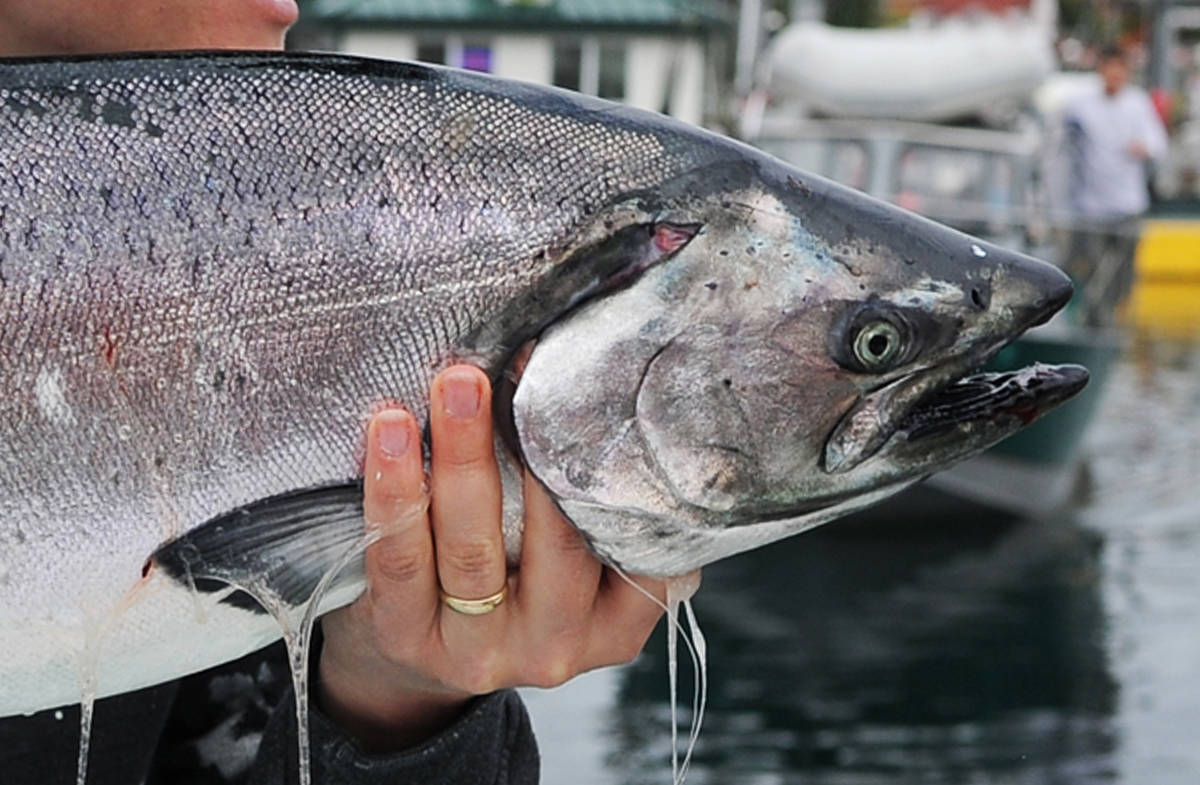Ballot Measure 1, known as Stand for Salmon, has generated debate over how it would affect everyday activities like hunting and fishing.
Opponents have raised concern that common activities like crossing a stream on an ATV won’t be allowed without a permit. Proponents have said the measure provides for such activity, as long as it doesn’t harm habitat.
This is the first of three articles by the Empire looking at Ballot Measure 1’s legal language. We’re starting with part of the measure that will directly affect everyday Alaskan activities: what’s called general permitting.
The measure, up for a vote Nov. 6, defines three different permits for activity on salmon-bearing waters. Large-scale development would receive major or minor permits, depending on how much it affects habitat.
A third category, general permitting, governs things like ATV stream crossing, recreational suction dredging and boat launching — activities that take place in fish streams, but affect habitat only slightly.
So, how do general permits work and who gets one?
As Alaska law is currently written, activities that disturb the “natural flow or bed” of fish habitat require a state permit. This applies to things like construction on fish habitat or vehicle crossing of fish-bearing streams.
Permitting is done through Alaska Department of Fish and & Game’s Habitat Division. The division breaks into three regions across the state, with headquarters in Fairbanks, Juneau and Anchorage.
Regional Supervisor Jackie Timothy runs Juneau’s Habitat Division.
ADF&G already issues general permits for common activities on fish habitat in certain places, Timothy explained. Things like ATV crossings, gold dredging and boat launching commonly qualify for general permits. (Fish and Game lists them all online.) How general permits are issued would change if Ballot Measure 1 passes, but the idea is the same.
Timothy used the example of a historic boat launch to explain why general permits are useful to habitat managers.
State law requires a permit for wheeled vehicles to enter anadromous fish habitat. But fish habitat is everywhere in Alaska, and so are boaters — and nobody is going to get anything much bigger than a kayak into the water without the assistance of a wheeled boat trailer. To avoid having thousands of boaters apply for habitat permits for an everyday activity like launching a skiff — bogging managers down in paperwork — Fish and Game will issue a general permit, provided they’re confident the activity won’t disturb fish habitat.
In essence, a general permit says: “‘Dear public, you can launch your boat at this historic site. Consider yourself permitted,’” Timothy explained.
“It’s Fish and Game saying, ‘We know this activity is occurring. It’s occurring in a manner that’s not too horrible for the fish that reside here, so we’re approving it,’” she said.
The permits apply to certain activities in a certain place and time, Timothy explained, but are extended to anyone. They’re an important tool in the Habitat Division’s bag for protecting fish habitat, Timothy said.
Should Ballot Measure 1 become law, some of the legal language governing general permits would be formally defined, but they’d be issued for the same types of things.
Understanding the difference means parsing a bit of legal jargon, but it’s still easier than loading a skiff into the water without a trailer.
Current fish habitat regulations are based on a section of Alaska law called the “Protection of Waterways for Anadromous Fish” (AS 16.05.871-901).
There’s actually no mention of general permits in this section. What it does say is that Fish and Game must be contacted before anyone uses “wheeled, tracked, or excavating equipment or log-dragging equipment in the bed of a specified river, lake, or stream.”
The commissioner then needs to determine if more information is required: full specifications or plans of the proposed use or work and the dates of the use or work.
If ADF&G finds that the use doesn’t pose any harm to the “proper protection,” of fish habitat, state law requires Fish and Game to approve it.
Sometimes they’ll issue a public notice for comment, like Fish and Game recently did when permitting machinery to cross a stream near Haines, Timothy said. (Nobody commented on that one, and it was sent through, she said.)
But public comment isn’t required under current law. Ballot Measure 1 would add a public comment period and would formalize other aspects of general permitting.
Just as general permits are used now, Ballot Measure 1 would allow them for minor activities in certain places.
Permitted activities would have to be related to the public good, and not large-scale development. A mining project, for instance, couldn’t secure a general permit for a stream crossing under Ballot Measure 1.
Individuals could apply for one, or the Fish and Game commissioner could issue one without an application. The activity would have to avoid adverse effects to fish habitat.
Once a general permit is applied for or proposed by Fish and Game, a 30-day public comment period opens. A public hearing could be held if requested, too. Fish and Game would also be required to review its general permits every five years.
More coverage
The Empire will publish two more articles looking at how Ballot Measure 1 affects state law. On Oct. 31, we’ll take a look at minor permits, and on Nov. 1, we’ll look at major permits.
• Contact reporter Kevin Gullufsen at 523-2228 and kgullufsen@juneauempire.com. Follow him on Twitter at @KevinGullufsen.


